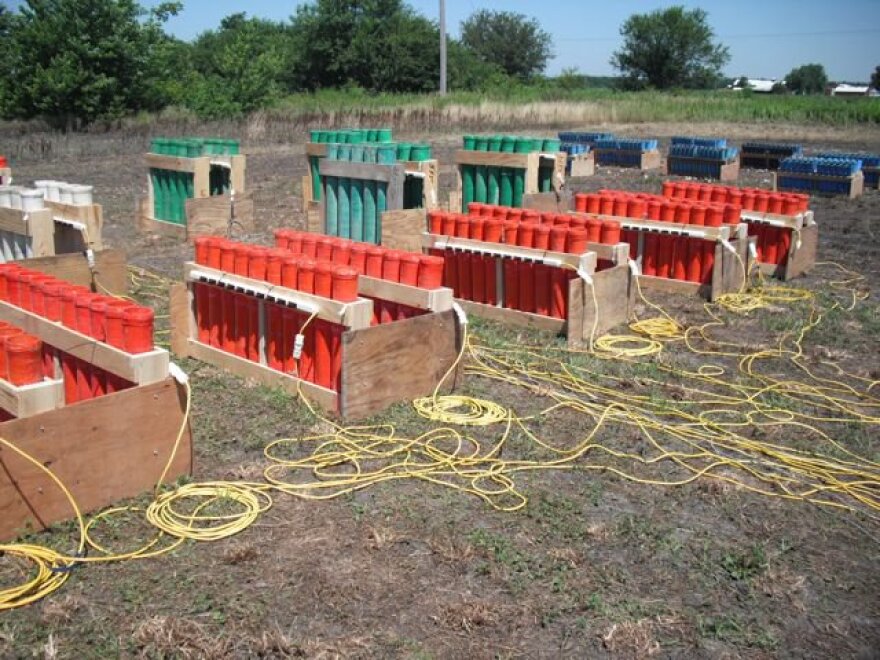While you're looking up at the night sky watching fireworks this Independence Day, there's a team of pyrotechnicians working on the ground to ensure the show goes off with a bang. Monmouth College Chemistry professor Brad Sturgeon works on a four-man shoot team to put on professional fireworks shows across the tri states region. He’s been with J&M Displays for six years.
The company handles the Independence Day celebrations in Monmouth, Macomb, and Bushnell just to name a few. He said the 4th of July holiday is their busiest time of year.
Sturgeon said there are two ways to do a show: manually or electronically. His team electronically fires, also known as e-firing, which requires them to spend several hours during the day setting up for the firework shows that night.

He said the other method, hand firing, requires digging in 10-20 different mortars and reusing them throughout the show. But e-firing requires every shell fired to have its own separate mortar which gives a lot more control over the show.
"With every shell having its own mortar, we make fan arrangements, we orient them differently so, we kind of, I guess I think of it as fill the space above the crowd," Sturgeon said.
Shells come in a variety of sizes. The basic salutes are simple shells; those are the loud, bright flash fireworks that can trigger car alarms. He said it becomes more complicated and the shells grow larger as the firework gets more moving pieces, which you see in fireworks that send out willows and then crackle at the end.

Sturgeon said the shape shells are always crowd pleasers. Those are the smiley faces, cubes, hearts and clovers. "Our favorite is the cube. Now this is a sphere that's moving, so depending on the orientation of a happy face, it may land so its in the plane of your view so it just looks like a line, but a cube, no matter where you see it, it's a cube," Sturgeon said.
Most fireworks shows by J&M Displays last about 20 minutes. Sturgeon said there's an art to calibrating and conducting a show to keep the audience interested.
"Doing some shells that are really not that pretty, 'Oh that was kind of nice.' Then, you launch a four and you're like, 'Oh, that's really nice.' But if we had just done the four you might not of realized comparatively that it was that interesting," Sturgeon said.
The fireworks shell is a sphere with the lift charge at the bottom. Sturgeon said it looks similar to an ice cream cone. The lift charge when it burns produces a lot of gas and heat which is what launches it from the tube. "It's pretty neat to look at the details of it and to think about sort of the physics and the engineering and the chemistry that goes into it. That's one of the things that attracted me to do this," Sturgeon said.

It can be a dangerous job. Sturgeon said with the electronic fires, the greatest threat is a sleeper shell which is a shell that was fired, but still has some heat in it that hasn't gone out yet. "We will not go out into the field where the mortars are for about 20 minutes to make sure any of the embers that are out there die down. If you go out and there's a sleeper that fires three minutes after the show is done, it can be problematic," Sturgeon said.
There's also the risk for low fires or shells that shoot off in the wrong direction. During the show, the crew hide behind a shield of about 2-inches of plywood. "I can't see any of the mortars, because if I can see them, they can see me and so we want to stay out of the line of sight," Sturgeon said.
He said embers will fall throughout the display and he had had to help extinguish a teammate before. He said his team wears long sleeves, hard hats and safety glasses. "We're ready to have a little hot stuff rain upon us," Sturgeon said. "We're not the best looking crowd while we are out there, but we get the job done."




